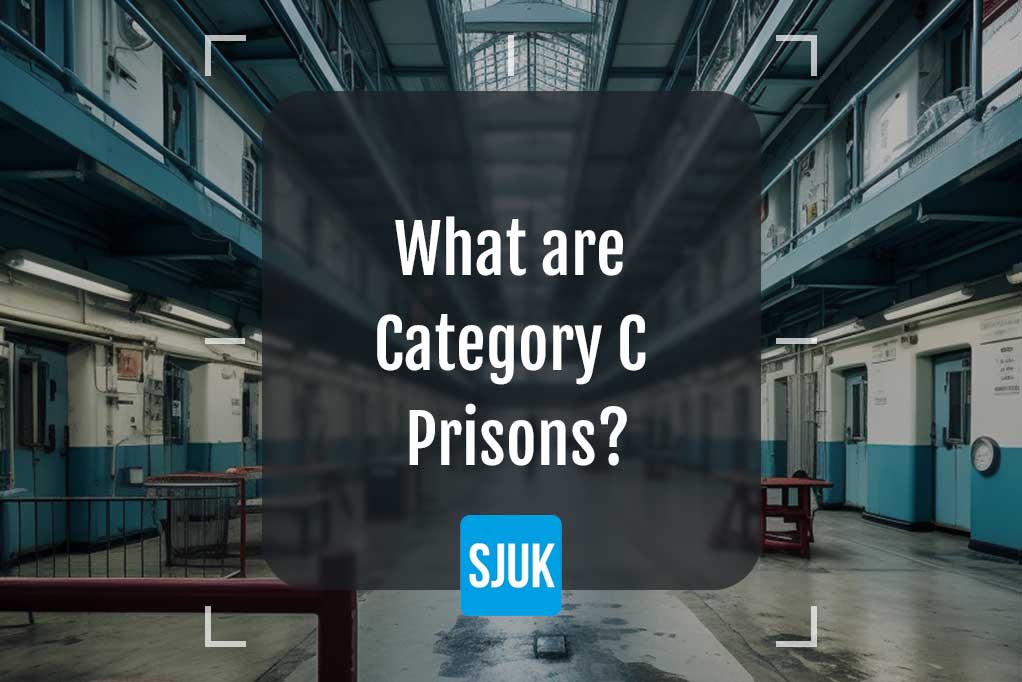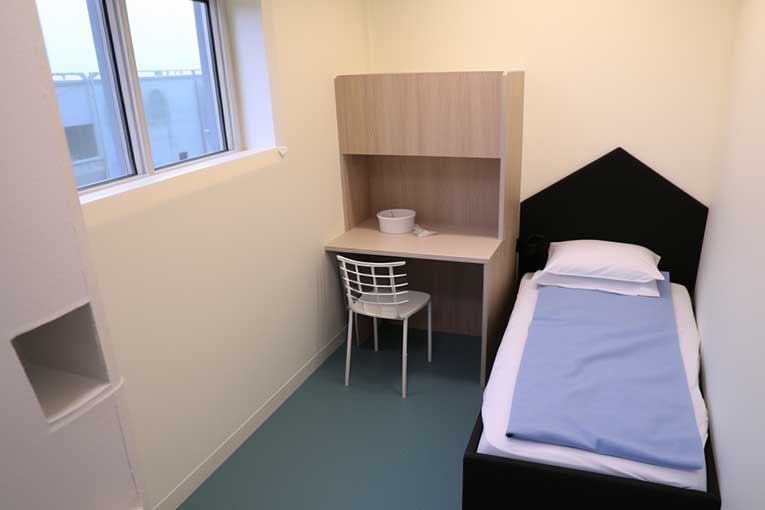
The prisons of the British justice system are meticulously categorised to cater to the diverse spectrum of offences and offenders.
Among these classifications, Category C prisons hold a unique position of being a combination of security and rehabilitation. .
Delving into their specific role is imperative for a comprehensive grasp of the complexities inherent in the criminal justice system.
In this article we will be diving into why category C prisons are used, what crimes would put an offender in a category C prison and their advantages and challenges.
Table of Contents
ToggleIn the United Kingdom, there are four main types of prisons based on the security level and risk associated with the offenders.
This categorization is a fundamental aspect of the country’s penal system, ensuring that offenders are housed in facilities that match their security needs.
The UK prison system comprises four main categories: Category A, Category B, Category C, and Category D.
Category A prisons are the highest security level facilities in the UK.
These prisons house offenders considered highly dangerous and likely to escape.
Offenders in Category A prisons are often those convicted of serious offences, including murder, terrorism, or organised crime.
Security measures in these prisons are stringent, and offenders are under constant supervision to prevent escapes or any form of violence within the facility.
Category B prisons house offenders who are less dangerous than Category A but still pose a significant risk.
Offenders in Category B prisons might have committed serious crimes, but the risk of escape or violence within the prison is lower compared to Category A.
These prisons have robust security measures but are relatively more focused on rehabilitation efforts than Category A facilities.
Category C prisons are designed for offenders who present a moderate risk.
Offenders in this category have committed various offences, often non-violent.
These prisons strike a balance between security measures, such as access control and airport style x-ray scanners, and rehabilitation initiatives, aiming to address the specific needs of offenders who have demonstrated potential for rehabilitation.
Category D prisons are the lowest security level facilities in the UK.
Offenders in Category D are considered low-risk offenders who are unlikely to escape.
These prisons are often used for offenders nearing the end of their sentences and are focused on preparing them for reintegration into society.
Offenders in Category D prisons might be involved in community work or employment outside the prison under strict supervision.

Category C prisons play a vital role in the UK’s penal system, representing a middle ground in terms of security.
Offenders housed in Category C prisons are typically those who have been assessed as presenting a moderate risk level.
This risk assessment takes into account factors such as their criminal history, behaviour in prison, and the nature of their offences.
While these offenders are considered less likely to escape compared to those in high-security Category B prisons, they still require a significant level of supervision and security.
Staff in Category C prisons are well-trained to manage a diverse range of offenders, ensuring order and safety within the facility.
The distinguishing feature of Category C prisons is their focus on balancing security measures with rehabilitation efforts.
Offenders in these facilities are provided with various programs and opportunities aimed at addressing the root causes of their criminal behaviour.
These programs can include education, vocational training, therapy, and counselling sessions.
By addressing the underlying issues that may contribute to criminal behaviour, Category C prisons aim to facilitate the rehabilitation and reintegration of offenders back into society.
Category C prisons often have structured routines and activities for offenders.
These routines are designed to instil discipline, promote positive behaviour, and offer offenders a sense of purpose.
Workshops, educational classes, and skill-building programs are common features of Category C prisons.
Offenders may also have access to mental health services and substance abuse programs if needed.
Moreover, these prisons often have a focus on preparing offenders for employment opportunities upon release.
Job training programs are tailored to develop practical skills that can enhance an inmate’s employability, increasing their chances of successful reintegration into society.
This emphasis on rehabilitation not only benefits the individual offenders but also contributes to reducing the overall rate of reoffending, making communities safer in the long run.

Category C prisons are specifically designed to accommodate individuals convicted of a range of non-violent offences.
These offences often fall into categories such as theft, fraud, burglary, or white-collar crimes. While the crimes vary widely, they share a commonality in being non-violent in nature.
Offenders in Category C prisons may include individuals convicted of financial crimes, like embezzlement or fraud, where the primary motive is monetary gain rather than physical harm to others.
Additionally, those convicted of property-related crimes, such as burglary or vandalism, may find themselves in Category C facilities.
Offences like shoplifting or car theft, which do not involve direct violence against individuals, are also common reasons for imprisonment in these facilities.
Drug-related offences, particularly non-violent drug trafficking or possession charges, often lead individuals to Category C prisons.
In these cases, individuals are incarcerated due to their involvement in illegal drug activities rather than any violent behaviour.
Furthermore, white-collar crimes, including various forms of corporate fraud, insider trading, or identity theft, can result in sentences served in Category C facilities.
These crimes involve deceit, manipulation, or financial schemes, which can harm individuals or organisations economically but do not necessarily involve physical harm.
Using lower security category C prisons for non-violent crimes has a number of advantages:
Category C prisons strike a crucial balance between security and rehabilitation.
Their medium-security status means they are equipped with necessary security measures, ensuring that offenders are monitored effectively while providing room for structured rehabilitation programs.
This balance is essential for fostering an environment where offenders can focus on their reformation without feeling excessively restricted.

One of the significant advantages of Category C prisons is their strong emphasis on rehabilitation.
Offenders in these facilities have access to a variety of educational and vocational programs aimed at developing skills necessary for reintegration into society.
These programs can include job training, therapy, counselling, and educational courses, creating opportunities for personal growth and reducing the likelihood of reoffending.
Category C prisons provide a structured daily routine for offenders.
Having a well-organised schedule, including work assignments, educational classes, and recreational activities, promotes discipline and a sense of purpose among the incarcerated individuals.
Such routines can aid in behavioural modification, teaching offenders essential life skills and time management.
Medium-security facilities are generally more cost-effective than high-security prisons.
They require fewer resources for security personnel and infrastructure while still maintaining an adequate level of security.
This cost efficiency allows authorities to allocate funds towards various rehabilitation and reintegration programs, enhancing the overall effectiveness of the prison system.
Category C prisons play a pivotal role in preparing offenders for their eventual release into society.
By offering educational programs and vocational training, offenders can acquire skills that increase their employability upon release.
Additionally, therapy and counselling services help individuals address underlying issues, improving their mental and emotional well-being, which is crucial for successful reintegration into the community.
The focus on rehabilitation within Category C prisons contributes to lower rates of reoffending.
Offenders who participate in meaningful educational and therapeutic activities are more likely to reintegrate successfully into society upon release.
This reduced recidivism not only benefits the individual but also society as a whole, leading to safer communities and a more productive workforce.
Despite their advantages, Category C prisons are not without challenges that need to be overcome to be effective.
Category C prisons, like many other correctional facilities, often face issues related to overcrowding.
Limited resources are stretched thin as these prisons attempt to accommodate a significant number of offenders.
Overcrowding can lead to heightened tension among prisoners, strain staff resources, and hinder the implementation of effective rehabilitation programs.
Medium-security prisons house a diverse range of offenders, including some with histories of violent behaviour.
Managing this mix poses security challenges, as staff must balance providing opportunities for rehabilitation with ensuring the safety of all offenders and personnel.
Instances of violence and unrest can occur, demanding constant vigilance from the prison staff.
While Category C prisons offer various rehabilitation programs, the range and depth of these programs might be limited compared to higher-security facilities.
Offenders requiring specialised treatments for mental health issues, substance abuse, or other specific needs might find their access to tailored programs restricted due to resource constraints.
Recruiting and retaining skilled and experienced staff is an ongoing challenge in Category C prisons.
Adequate training and support are essential for managing offenders effectively and facilitating rehabilitation efforts.
Staff shortages or high turnover rates can impact the consistency and quality of programs, hindering the person’s ability to fulfil its rehabilitative goals.
While Category C prisons focus on rehabilitation, the challenge lies in ensuring that the efforts translate into successful reintegration into society.
Offenders released from these prisons often face societal stigmas and limited support networks, making their transition back into the community challenging.
Without proper support systems, former offenders can struggle to find employment and housing, increasing the risk of recidivism.
Category C prisons often rely on community support networks to assist offenders upon their release.
However, these networks might be limited in their capacity, especially in economically disadvantaged areas.
Lack of community support, such as halfway houses, job placement services, or counselling centres, can hinder successful reintegration efforts, leading to higher rates of reoffending.
Category C prisons play a vital role in the British justice system.
By providing a balanced environment that combines security with rehabilitation, these facilities offer a chance for offenders to rebuild their lives.
However, the challenges they face, especially concerning funding and security assessments, underline the ongoing need for careful planning and resources allocation within the criminal justice system.
Understanding the significance of Category C prisons provides insights not only into the world of corrections but also into the complexities of crime, punishment, and societal reintegration.